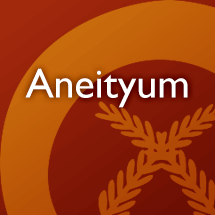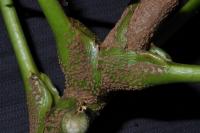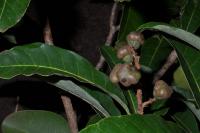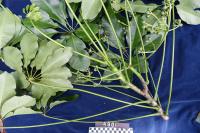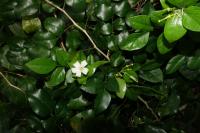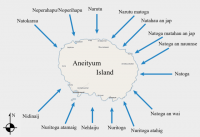An example search has returned 100 entries
apnyin
n. time; weather; day; morning
bookmarkehmehma
adj. healed, applied to wounds; ripe; yellow
bookmarkinbul
n. native rose; rosa chinensis; the hibiscus; also "inpul"
bookmarkincatyatou
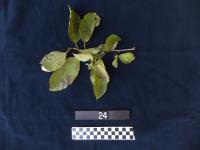
n. tree. Acting as a fence post. (collection: Ashley A McGuigan #24)
Example: 1. For vomiting/uneasyness - remove the bark of a stem and take the inner bark (this should be white). Smash the white bark with about 150ml of cold water and drink. The bark can also be boiled and cooled down to drink cold. Believes when you vomit a lot this will restore your body and give you energy again. Take after vomiting but can use even when not sick. 2. For stomache ache - Can also be prepare and taken as in part 1. 3. For painful urination, also prepared as in part 1. 4. The fruits are sticky and used as a type of local “glue.” Collect the fruits when ripe, hold the outside of the fruit in the hand, and put the end of the fruit that has the sticky sap on paper or anything else needing to be glued. In ancient times, this sticky glue helped join the strings together that were used to make a long fishing line. 5. In ancient times this sticky glue helped join the strings together when making a long one for fishing. 6. During the heat of the day, in the hot season, take inner bark from 1 stick, scrape bark into 1 liter water and drink all day to help prevent a person from getting urinary infection, resulting in painful urination from being in the sun too much. 7. If you put the leaves of this plant in a bag with your fishing gear – it will help catch a lot of fish – magic. 8. Cut a 1-2 m long branch in each of 4 corners of the garden which is a rectangle, place it in an “X” at each corner, this will cleanse people who have not been cleansed who come in the garden. 9. If a person is not cleansed e.g. has not fasted from certain foods, the crops will not bear good fruits. So when gardening, people believe it is best not to eat coconut, shellfish, fish, stay away from sex, and no fermented food like breadfruit and bananas, OR if you have a visitor overnight and then you heal to cleanse yourself before going to the garden. After a woman finishes her period, she will stay out of garden for 10 days, this is specifically for kava, water taro, sugarcane and yam in the garden. Other crops – cassava, sweet potato, and taro Fiji are okay. Different Kastom for N, S, W, E people – so this Kastom is for South and Eastern people.
bookmarkincetcai
n. a bundle of wood for fire
bookmarkinholai mobo
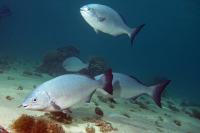
n. Brown Chub, Grey Sea Chub, Grey Drummer
Example: Photo by John Turnbull, License: CC BY-SA 3.0 via Fishes of Australia
bookmarkinja
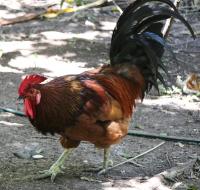
inmerisiahau
n. kind of breadfruit
bookmarkinm̃ap̃
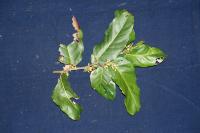
n. tree, 12-14 m tall (collection: Gregory M. Plunkett #3611)
Example: 1. The nut of this tree is edible and very good. Boil it with skin on or bake it in the earth oven and then cut it in half and eat. 2. Leaves for top of house ridge. 3. Leaves for fertilizing the water taro in swamps.
bookmarkinruwu
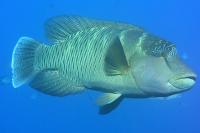
n. Humphead wrasse
Example: Photo by Anne Hoggett / Lizard Island Research Station, License: CC BY-SA 3.0 via Fishes of Australia
bookmarkintal has
n. kind of taro
bookmarkinteijid
n. species of pine
bookmarkintesyan numarei
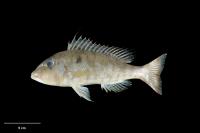
n. Longspine emperor
Example: Photo by Museum of New Zealand / Te Papa Tongarewa, License: CC BY-NC-ND 3.0 via Fishes of Australia
bookmarkintop̃ asiej
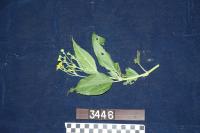
intop̃asiej ura
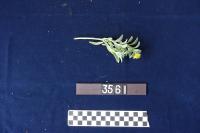
n. stoloniferous herb, 15 cm tall (collection: Gregory M. Plunkett #3561)
Example: In the past the ancestors learned to cook the leaves of this species with fish in an earth over and then eat the leaves as well as the fish. Today, fish are wrapped with small leaves and then covered with lap-lap leaf (Polyscias) and cooked in an earth oven.
bookmarkinwai meteuc
n. the sweet potato
bookmarkinwau
n. a creeper, a vine
bookmarkinweriwei
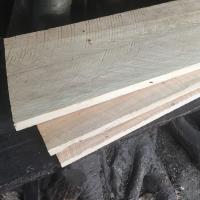
inwowityuwun
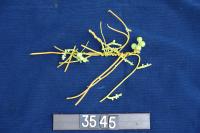
n. parasitic vine scrambling over Scaevola taccada, at edge of strand. Fruits green. (collection: Gregory M. Plunkett #3545)
Example: 1. Take a handful of vine, pound it and wash hair, like shampoo – makes hair curly and like rasta. 2a. This is a "message plant." If a person is walking through a village that is not his, people know that they come in peace. 2b. Message plant - if a group is discussing something and one person goes out and makes a head les of this vine, it means that there can’t be an agreement. 2.) If you are angry at a person, drop the vine at their door, in the case of a visitor or land dispute and they need to leave.
bookmarkinyat
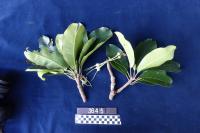
n. tree, 10 m tall (collection: Gregory M. Plunkett #3645)
Example: The ripe fruits of this plant are edible and said to be delicious as well as smell very good. When the fruits turn brown and soft you can open it and there will be a shell like an upsidedown turtle shell. You can eat the fruit out. As the fruit smells good, people put a basket of ripe fruits in their homes to give it a good smell. The unripe fruits can be eaten, but only when cooked in an earth oven so it is not sticky. The tree can be used for sawn timber. Can be used for building house, specifically the house posts. Number one timber.
bookmarkkalmapig
n. kind of banana
bookmarknaceijo
n. half tide when rising
bookmarknadi adiat upni
naha
n. Crinum asiaticum L.
Example: subterranean part used as mouthwash for toothache (Crinum asiaticum)
bookmarknahmas
n. kind of plant, grass, or fern
bookmarknaho
n. a plant, the fruit of which is prepared like arrowroot, and used as a food for sick people
bookmarknahoai
n. a plant from which twine is made
bookmarknaijema
n. cotton
bookmarknake
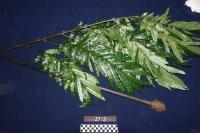
nakoai
n. species of palm tree
bookmarknala

nalak mideuc
n. kind of plantain
bookmarkname cedo
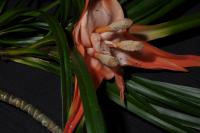
namlau
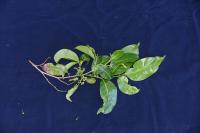
n. shrub, 2 m tall (collection: Gregory M. Plunkett #3490)
Example: 1. The larger stems of this plant can be used to build houses, for rafters. 2. It is also a good source of firewood. 3. Ancestors, before go to chief’s canal and want to talk about a complicated issue – a person would cut a branch and bring it to the sea and tap the water surface and would say what he wants, ask that he would want that issue to be solved and that others would follow his ideas and then go back to the meeting place and take stick, keep wind at his back, moving stick in all directions and then he will convince the people of his ideas. This is done by the chief’s spokesman. Helps convince the opposition. Helps keep power in hands of parent(??) chief rather than subchiefs who might have other ideas.
bookmarknanad
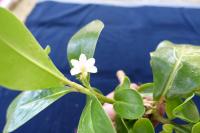
napdaj
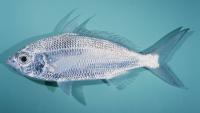
napojev
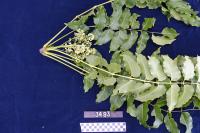
n. sparsely branched tree, 5 m tall (collection: Gregory M. Plunkett #3493)
Example: The leaves of this plant are used in cooking, particuarly with the earth oven. Use a fire to heat stones, then when the fire burns down and the stones are hot, pile these leaves on top of the hot stones and then place the food being cooked--taro, fish, pig, cassava, banana or other foods--on top of the leaves. Then pile more of these leaves on top of the food and then place additional hot stones on top of that pile of leaves. While the food is cooking--each type of food takes a different amount of time--the leaves give off a very nice smell and help flavor the food.
bookmarknasjiramnem
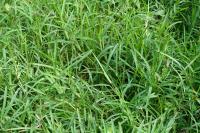
n. grass to 20-30 cm tall, florets brown. Growing along trail. (collection: Michael J. Balick #4970)
Example: This plant is used to make a medicine to stop bleeding, as a styptic. Squeeze a handful of leaves together and apply the leaves as a poultice to the wound or drip the juice on the wound when it does not seem wise to put pressure on the bleeding. This will stop the blood from flowing from the wound and is only to be used on a small wound.
bookmarknatarau
n. a bamboo flute
bookmarknecemas
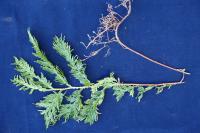
n. terrestrial plant, growing in dry forest. (collection: Gregory M. Plunkett #3509)
Example: This is a "message plant" that signifies that there has been a death. The person holds it or puts it on their head, goes to another person’s house and hands it to the person they wish to convey the message to, without saying anything and that person knows that someone has died. It can also be handed to that person. The person receiving the message then asks "who" and is told the deceased person’s name.
bookmarknecjop̃dak

n. low-growing, creeping vine growing in grassy area just inland from coastal strand. Flowers yellow. (collection: Gregory M. Plunkett #3223)
Example: The leaves of this plant are used to treat stomach ache. Take a handful of leaves and mix with 1/2 liter of water, crush the leaves in the water and drink the entire amount when your stomach hurts. Alternatively, this can also be consumed 1x a week as a tonic drink for the stomach and system.
bookmarknedeij
n. a small gray berry used as beads
bookmarkneduon
n. a bone, a foot
bookmarknedwonomo
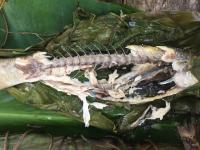
nehep
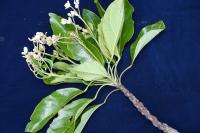
n. tree, 15 m tall (collection: Gregory M. Plunkett #3590)
Example: 1. Used as a medicine to help stop bleeding. Take the inner bark, mash it, and dip in water. Then apply the poultice to the bleeding wound to help stop the bleeding. This treatment will also promote healing of the wound. When the poultice dries it becomes hard and sticks to the wound. At that point leave it on the wound until the pain goes away and then it can be peeled off of the wound. 2. Wood good for making canoe.
bookmarknejev
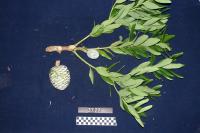
nekro
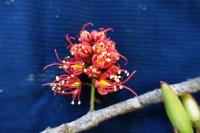
nelmaha
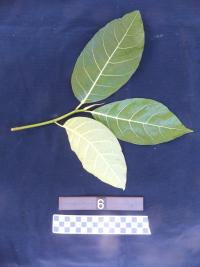
n. tree. Growing near village. (collection: Ashley A McGuigan #6)
Example: 1. To cure spirit sickness of the niteitau. Use plants that also end with "au" : niditau, intoutau, naoyerop. Go to the top of the plant to get the soft leaves of the plants niditau, intoutau, naoyerop, also take the bark. The person making the medicine should be holding the these leaves with a piece of nelmaha. Nelmaha means go away. The sick person chews the leaves and bark and swallows the juice spitting out the fiber into the nelmaha the medicine maker is holding. The medicine person then takes the spit out fiber in the nalmaha leaf and throws it into the sea in front of the village. 2. To cure headaches casued by bad spirit - Take one top from Nelmaha and one from inrowod (white stripe variety) Combine and chew these then spit them out and apply to the sick persons forehead. 3. To cure headaches - Someone other than the woman must prepare this. Break the top branch of netethae and remove leaves for use. Combine with the top leaves of the top branch of nelmaha. Chew the leaves and drink the juice. Do this when the sun is setting on the horizon. The woman gives the leftover fibers to the person who prepared the medicine and that person goes and throws the fibers in the direction of the setting sun. 4. To cure toothache when pregnant - Take the inner bark from Intejed and boil it in a pot of seawater (about 1 liter) along with 2 leaves from each of inpounatmas, narayag, nahayag, and nelmaha. Boil until juice is visibly leaving the plants. Put this water into your mouth and hold it there for 2-3 minutes. Do this this with one cup in the morning, 1 cup in the afternoon, and 1 cup in the evening. 5. Used to fight against black magic in an unspecified way. 6. Roll leaf and put in pocket for protection when walk in a new area. 7. Message plant if a land dispute – if a person puts this stem or leaf in another’s garden whom they are angry with it means go away!! 8. To treat sick people, especially who fall ill from black magic to save their life. Symptoms vary, for example a person with small boils over body,* a person chews the leaf and spits it on the sick person, 1x and then puts the branch with leaves near the sick person when they sleep – 3x (1x day) branch is ca. 25cm long. (*headache, severe)
bookmarknemtokei

n. tree to 7 m tall, dbh 8 cm (collection: Michael J. Balick #4861)
Example: When a person does heavy work and their body feels tired, they should take 1 handful of leaves, squeeze them into a cup of water and drink--this will make the person feel better. People can drink this from time to time to give the body energy even before you are tired. To treat constipation, take 4- 8’ pieces of stem from a 2 cm dbh section of the tree, peel the outside bark off, collect the inner bark and mash with a stone or hammer, put in a colander to strain out the wood, add 1.5 l water, the liquid becomes green or whitish with sticky liquid. Drink this one time, it tastes cold and then after about 30 minutes it feels like the bowel is working and then normal function returns--this does not induce diarrhea but rather returns the bowel to normal function.
bookmarknepekhau

nepnou
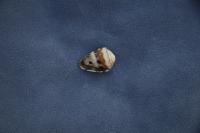
nete
n. kind of tree
bookmarkneuled
n. kind of sugarcane
bookmarknida
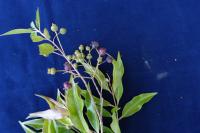
nigired

n. tree, 4 m tall (collection: Gregory M. Plunkett #3623)
Example: People use the leaf of this plant to layer on the bottom of the earth oven, and then pile food such as manioc or taro on it, then pile leaves of this species on top of that. This will help insulate the food from the high heat of the earth oven and allow it to cook better. Used especailly in feasts like weddings. Women usually collect this leaf and is used to cover very large earth ovens.
bookmarknihpad
n. kind of tree
bookmarknipjid acen
n. citron; lemon; lime tree
bookmarknohu itai
n. fruit trees
bookmarknop̃ou

n. tree. Found in the village, usually grows in the hills. (collection: Ashley A McGuigan #16)
Example: 1. Lot of oil in the heartwood so it is good to start a fire, split it into small strips and you can light it for a fire. 2. Calendar plant – when the fruits ripen people know that this is the best season to eat the big hermit crab – meaning that they are fat.
bookmarknowat
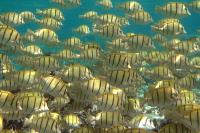
n. Convict surgeonfish, convict tang
Example: Photo by Philippe Bourjon / Fishbase, License: CC BY-SA 3.0 via Fishes of Australia
bookmarknugyaubod
n. kind of tree
bookmarknusjau
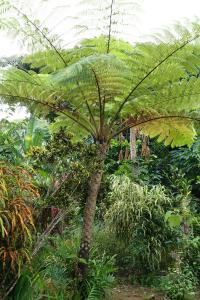
n. tree fern to 5 m tall, fronds 2. 5 m long (collection: Michael J. Balick #5014)
Example: Trunk of this plant is used to make food. Cut the stem in 2-3 foot pieces, peel the outer stem, put the peeled stems in an earth oven to cook for the afternoon through the night--about 12 hours. It will be ready the next day. Peel off any remaining fibrous tissue, slice the stems and eat. They are said to taste like sweet potato. The young fronds are boiled for 5 minutes and coconut milk is added, this mixture is then eaten. It is important to collect only the inrolled fronds that have not yet fully opened. The fronds are used to make temporary houses when camping in the bush. They are used to make a roof. To make a cassava grater, take 2-3 pieces of the frond stype, connect them together by piercing them on the sides with a piece of bamboo or any stick such that they are held together in parallel fashion, and use this to grate uncooked cassava to make lap-lap and to grate banana or any food that needs to be processed in this way. The thorny part of the stipe grates the food.
bookmarkridiau
n. kind of taro
bookmarkridiau mayi
n. kind of taro
bookmarkrohalrohal
adj. rough, applied to sugarcane-leaf thatch
bookmarktatalaha
n. kind of taro
bookmarkyetse
v.n. to go down
bookmark